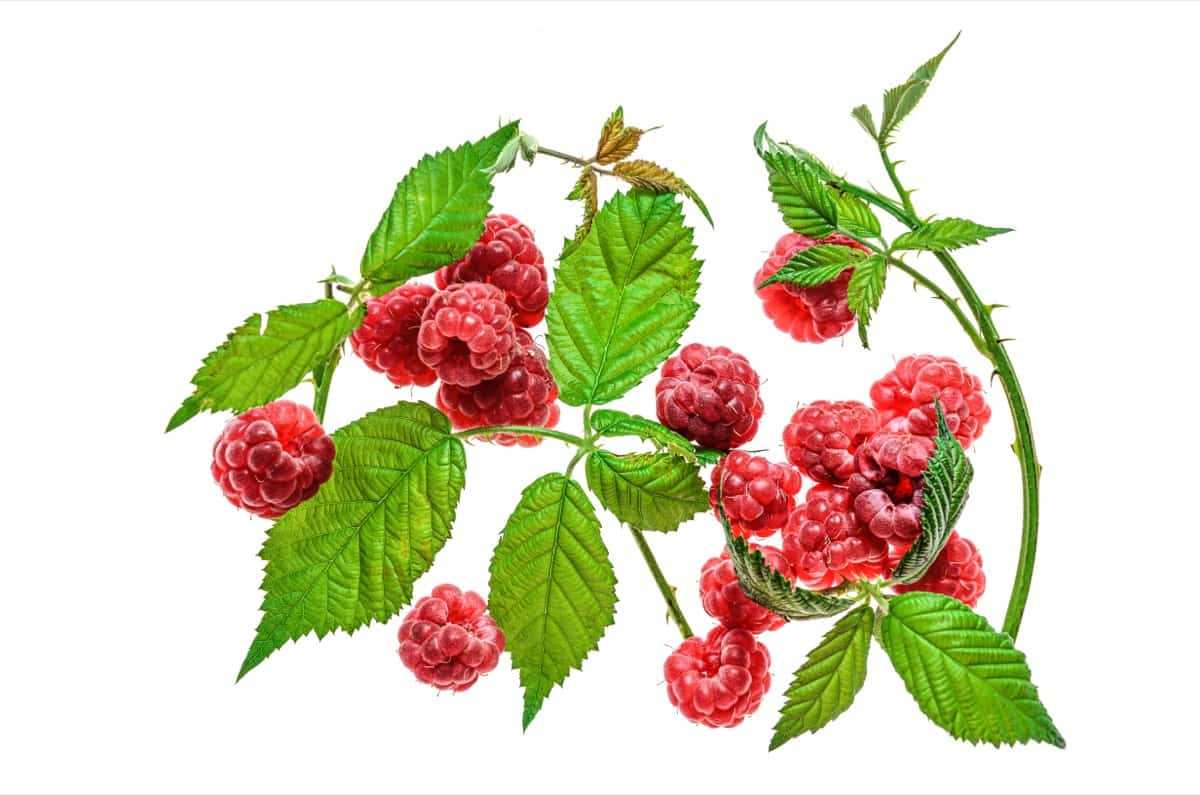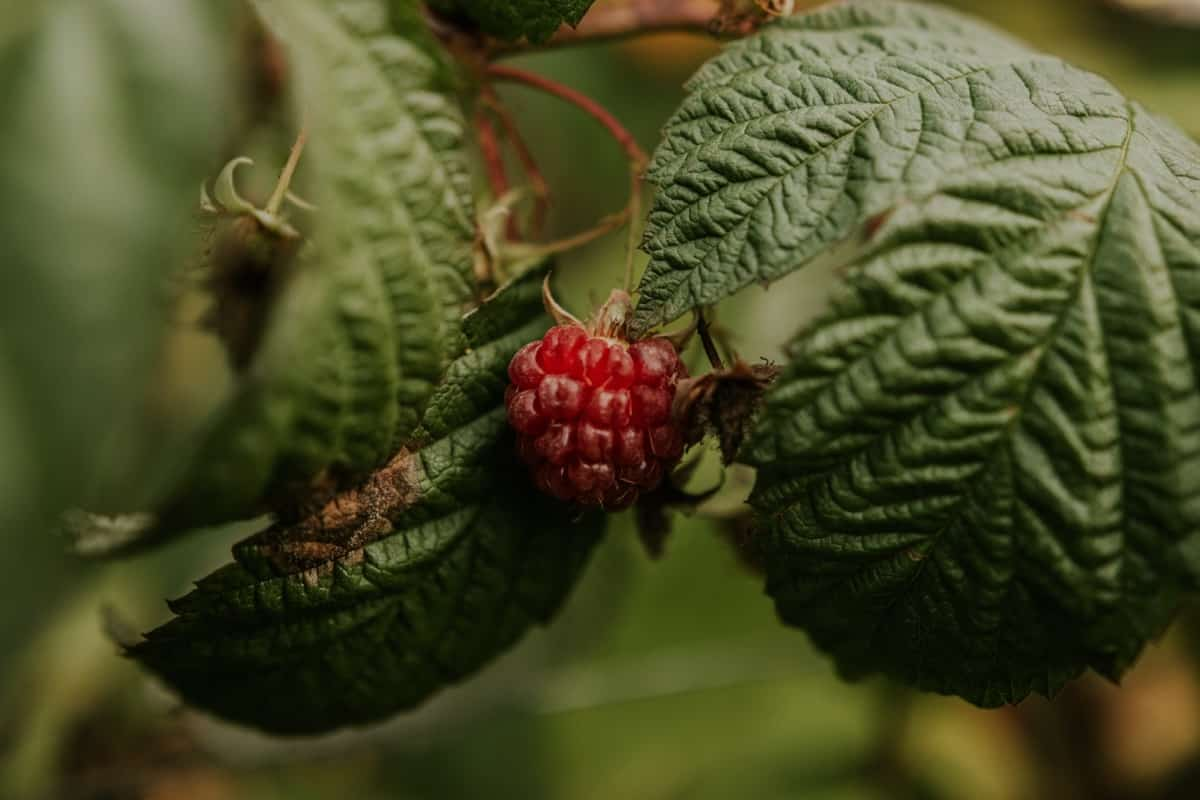Botanically known as Rubus hayata-Koizumi (and previously as Rubus calycinoides), Creeping Raspberry is a versatile groundcover plant that belongs to the Rosaceae family. Its fast-growing nature and attractive features have gained popularity among gardeners and landscape enthusiasts.

Creeping Raspberry will make a statement whether you grow it as a ground cover in your garden beds or containers or use it as a cascading ornamental in hanging baskets. Its ability to adapt to various growing conditions and climates makes it suitable for many regions. Is Creeping Raspberry edible? Yes. While the fruits of this delightful plant are indeed edible and tasty.
Creeping Raspberry Groundcover Plant
Cultivating Creeping Raspberry: Soil Preparation and Planting Techniques
This versatile groundcover thrives best in well-draining soil rich in organic matter. Before planting, ensure the soil is loose and friable, allowing for easy root penetration. Loosen the soil to improve its texture and allow for better water absorption. Adding compost or aged manure will provide essential nutrients and help retain moisture.
Dig a hole larger than each plant’s root ball and place them at least 4 to 6 feet at a distance to allow for their spreading nature. Gently firm down the surrounding soil but avoid compacting it too much. After planting, water thoroughly to settle the roots into their new home. Mulching around each plant will help conserve moisture and maintain an even temperature.
Information About Growing Creeping Raspberry
| Common Name | Creeping Raspberry |
| Scientific Name | Rubus hayata-koidzumi |
| Family | Rosaceae |
| Sun | Full or partial sun ideal |
| Characteristics | Fragrant Flowers, Showy Foliage |
| Soil | Well-draining soil required |
| Uses | Containers, Ground Covers |
| Maintenance | Low |
| Growth Rate | Moderate |
| Water | Tolerant of drought, like moist-to-dry soil conditions |
Growing Conditions and Climate Requirements for Creeping Raspberry
Creeping Raspberry is a versatile groundcover plant that thrives in various growing conditions. To ensure the best results, it’s important to understand its specific climate requirements. Creeping Raspberry prefers full sun exposure, although it can adapt to partial shade if necessary.
In terms of soil, Creeping Raspberry is not overly picky. It can tolerate different soil types but prefers well-drained soil with good moisture retention. Adding organic matter before planting will help improve the soil structure and provide essential nutrients. Regular watering is crucial during the establishment phase and throughout the growing season.
Understanding the Botanical Characteristics of Creeping Raspberry
This fast-growing evergreen ground cover was imported from Taiwan and has gained popularity among gardeners for its attractive features. One notable characteristic of Creeping Raspberry is its fast growth rate. Creeping Raspberry is an evergreen ground cover imported from Taiwan. It grows low to the ground, reaching only 3 to 6 inches, but can spread up to 3 to 6 feet in all directions.
This makes it an excellent choice for filling empty spaces or covering large areas with minimal maintenance. The leaves of Creeping Raspberry are small and glossy green, creating a lush carpet-like appearance when planted en masse. These leaves offer year-round interest and provide excellent ground cover for areas where grass struggles to grow. What is the use of Creeping Raspberry?
Creeping Raspberry is not only a versatile groundcover plant, but it also has multiple uses in landscaping and gardening. Aside from using Creeping Raspberry as a ground cover in your garden, you can get creative with its placement. In summer, Creeping Raspberry produces delicate white flowers that add a touch of elegance to any garden space. These blooms attract pollinators such as bees and butterflies, enhancing biodiversity in your yard.
Propagation Methods for Creeping Raspberry: From Seeds to Cuttings
Starting from Seeds: To propagate Creeping Raspberry from seeds, you must collect ripe berries from an existing plant. Crush the berries and remove the pulp to expose the tiny seeds. Rinse and allow them to dry before storing them in a cool, dry place. When you’re ready to sow the seeds, prepare a well-draining potting mix and press them into it. Keep the soil moist but not waterlogged, and provide warmth by placing a plastic cover or using a seedling heat mat.
In case you missed it: Blueberries Fertilizer Requirements and Recommendations: Management for Optimal Yield

Taking Cuttings: Another effective way to propagate Creeping Raspberries is through stem cuttings. Select healthy stems with several nodes, preferably during early spring or late summer when new growth emerges. Using sharp pruning shears or scissors, take 4-6-inch-long cuttings just below a node. Remove leaves on the lower half of each cutting before planting them into well-draining soil mixtures in containers or directly into prepared garden beds.
Essential Care and Maintenance Tips for Healthy Creeping Raspberry Plants
- Watering: Creeping Raspberry plants require regular watering to thrive. Keep the soil consistently moist. Water deeply, allowing the water to penetrate the root zone.
- Pruning: Regular pruning is important to maintain the health and appearance of Creeping Raspberry plants. Trim back any dead or damaged foliage, as well as any overgrown or sprawling branches.
- Fertilizing: Apply a balanced fertilizer to the plant in early spring to provide the nutrients for healthy growth. Avoid excessive fertilizer, which can lead to lush foliage but fewer fruits.
- Mulching: Applying an organic mulch layer around Creeping Raspberry plants helps retain moisture, suppress weeds, and regulate soil temperature. Use materials like straw or wood chips and spread them evenly around the base of the plant.
- Pest Control: Monitor your Creeping Raspberry plants for signs of pests. If infestations occur, treat with appropriate organic insecticides or try natural remedies like neem oil or soap spray.
Common Pests and Diseases Affecting Creeping Raspberry and How to Manage Them
One common pest that may affect Creeping Raspberries is aphids. These tiny insects feed on the sap, causing stunted growth and distorted leaves. To manage an aphid infestation, use insecticidal soap or a strong blast of water to dislodge them from the leaves. Another pest affected by Creeping Raspberries is powdery mildew. This disease appears as a white powdery coating on the leaves and stems, hindering photosynthesis and weakening the plant’s health.
Regularly check your Raspberry plants for any signs of powdery mildew, and promptly removing affected foliage can help prevent its spread. Root rot is another issue that Creeping Raspberries may face, especially in poorly drained soil or during periods of excessive rainfall. To avoid this problem, ensure adequate drainage by incorporating organic matter into the soil. You can effectively manage these common pests and diseases affecting Creeping Raspberry plants by staying vigilant and taking appropriate action when necessary.
Harvesting and Utilizing the Fruits of Creeping Raspberry
To harvest the fruits, wait until they have fully ripened on the vines. This is typically during the summer months when vibrant colors start to appear. Gently pluck them from their stems and be careful not to damage any surrounding foliage or flowers. There are several possibilities for using Creeping Raspberry fruits. You can enjoy fruits as a healthy snack or a flavorful topping for desserts like ice cream or yogurt.
Landscaping Ideas and Design Inspiration with Creeping Raspberry
Creeping Raspberry is not just a versatile groundcover plant; it can also add beauty and charm to your landscape design. Whether you have a small garden or a sprawling backyard, you can incorporate this plant into your outdoor space in various ways. One idea is to use Creeping Raspberry as an edging plant along pathways or flower beds.
Its low-growing habit creates a soft and inviting border, adding visual interest and definition to your garden. Another creative way to utilize Creeping Raspberry is by planting it in hanging baskets or containers. Its cascading growth habit will create an elegant trailing effect that adds depth and texture to your patio or balcony.
In case you missed it: Mulberry Leaf Fodder: A Cost-effective Alternative for Livestock Feeding

For those who want to create a vibrant focal point in their garden, consider planting Creeping Raspberries near vertical structures such as walls or fences. As the plants spread, they gracefully drape over these structures, creating a stunning living tapestry of greenery. These low-maintenance plants fill empty spaces with dense foliage, providing year-round color and interest.
Conclusion
Creeping Raspberry is a versatile, attractive groundcover plant that can add beauty to your garden. With its fast growth, evergreen foliage, delicate flowers, and tasty fruits, this plant offers a range of benefits for aesthetic and culinary purposes. Aside from using Creeping Raspberry as a ground cover in your garden beds or borders, you can also get creative with incorporating it into your outdoor space. Planting it in containers or hanging baskets allows you to use it as a cascading ornamental feature that adds texture and visual interest.
- Feed Your Flock for Less: Top 10 Tips to Save on Chicken Feed
- Ultimate Guide to Ossabaw Island Hog: Breeding, Raising, Diet, and Care
- Hatching Answers: The Top 10 Reasons Your Chickens Aren’t Laying Eggs
- Eggs and Economics: Breaking Down the Cost of Raising Backyard Chickens
- Defend Your Greens: Proven Methods to Keep Iguanas Out of Your Garden
- Ultimate Guide to Cinnamon Queen Chicken: A Comprehensive Guide for Beginners
- Ultimate Guide to California Tan Chicken: Breeding, Raising, Diet, Egg-Production and Care
- Ultimate Guide to Marsh Daisy Chicken: Breeding, Raising, Diet, and Care
- 10 Types of Chicken Farming Businesses You Can Start for Profits